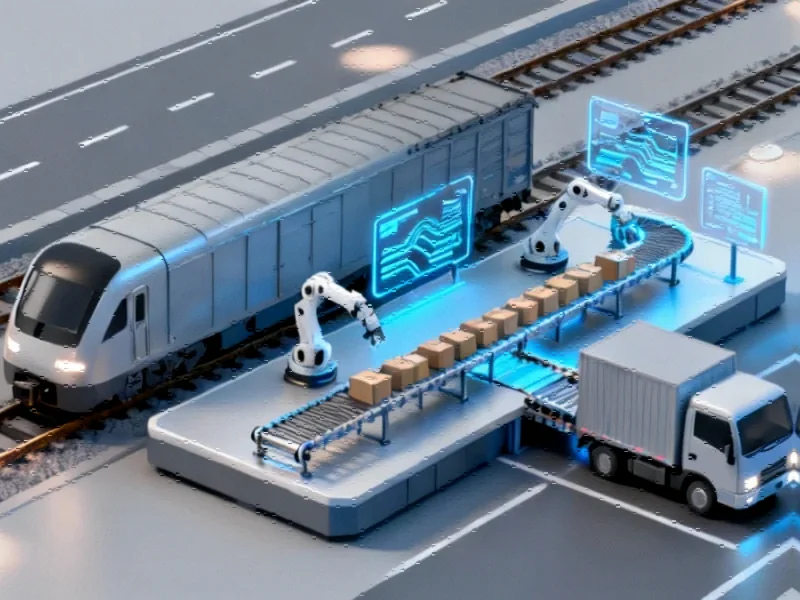The Automation Imperative
Amazon is accelerating toward a future where robotics and automation could potentially displace hundreds of thousands of human workers, according to internal documents and executive interviews detailed in a recent New York Times investigation. The company‘s ambitious automation roadmap suggests it could avoid hiring more than 600,000 workers over the coming decade through strategic implementation of advanced robotics systems. This represents one of the most significant workforce transformation initiatives in modern corporate history.
Table of Contents
Strategic Workforce Implications
The internal projections reveal that Amazon believes it can handle twice the product volume by 2033 while dramatically reducing its reliance on human labor. Company documents indicate that if Amazon succeeds in making 160,000 fewer hires by 2027, it could save approximately 30 cents on every item packed and delivered to U.S. customers. These potential savings highlight the powerful economic incentives driving Amazon’s automation strategy., as covered previously
“The scale of this automation initiative is unprecedented in retail and logistics,” said Dr. Elena Rodriguez, a supply chain automation expert at Stanford University. “What we’re seeing is a fundamental reimagining of how massive-scale fulfillment operations can function with minimal human intervention.”, according to industry reports
Technical Implementation Timeline
Amazon’s internal robotics department has established a clear target: automate 75% of all warehouse and fulfillment operations. The company recently deployed its one-millionth robot, marking a significant milestone since introducing its fully autonomous mobile robot in 2022. This growing robotic workforce includes systems for:
- Autonomous mobile robots that transport goods throughout fulfillment centers
- Advanced sorting systems that organize packages with minimal human oversight
- Robotic picking arms that handle individual items with increasing dexterity
- Automated packaging stations that customize box sizes and wrapping
Corporate Communication Strategy
Internal documents reveal Amazon’s careful approach to messaging around automation. The company appears to be consciously avoiding terms like “automation” and “artificial intelligence” in favor of more neutral language such as “advanced technology.” Some executives have even suggested using “cobot” instead of “robot” to emphasize collaborative human-machine relationships rather than replacement.
“Language matters in these transitions,” noted corporate communications specialist Michael Chen. “Terms like ‘cobot’ can help frame the narrative around augmentation rather than elimination, which may help mitigate public concern about job displacement.”
Community Relations and Public Perception
Despite moving forward with highly automated warehouses that employ few humans, Amazon appears to be preparing for potential community backlash. The NYT report indicates the company is actively participating in local events to establish itself as a “good corporate citizen.” However, Amazon denies that these community efforts are directly tied to its automation plans.
The tension between automation and employment comes at a time when Amazon continues to be a major employer. The company recently announced plans to hire 250,000 people for the upcoming holiday season, though it hasn’t specified how many of these positions will become permanent roles.
Industry-Wide Implications
Amazon’s automation push reflects broader trends across manufacturing, logistics, and retail. As companies increasingly turn to robotics to improve efficiency and reduce costs, the nature of warehouse work is transforming dramatically. The success or failure of Amazon’s ambitious automation targets will likely influence how other companies approach their own workforce automation strategies in the coming years.
What remains unclear is how these technological advances will ultimately balance with workforce needs, and whether the jobs created by growing e-commerce demand will offset those displaced by automation. As one of the world’s largest employers continues its robotics revolution, the entire industry watches closely.
Related Articles You May Find Interesting
- Claude AI Transforms Microsoft 365 Into Intelligent Collaboration Hub
- Chinese Cyber Espionage Group Salt Typhoon Targets European Telecom Networks Usi
- The Hidden Antitrust Battlefield: How Data Center Energy Consumption Is Reshapin
- Netflix’s Strategic Evolution: Beyond Subscriber Counts in the Streaming Wars
- Microsoft’s Xbox Expansion Strategy Faces Critical Test as New Devices Disappoin
This article aggregates information from publicly available sources. All trademarks and copyrights belong to their respective owners.
Note: Featured image is for illustrative purposes only and does not represent any specific product, service, or entity mentioned in this article.



